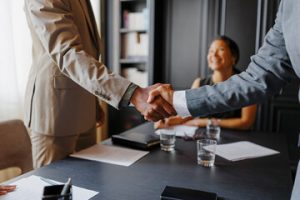Antiquing can be a fun and exciting activity for both seasoned professionals and novices alike. It’s important to keep in mind that you should never stop looking for the perfect vintage piece.

Designers often make scouring antique markets part of their routine. They love to find unique items that add character and charm to their homes. Read on Negozio Antiquariato Brescia to learn more.
Antiques are an excellent way to save money, as they are often cheaper than mass-produced items. They also have a unique look that can help you create a one-of-a-kind look for your home. Additionally, many of these pieces can be repurposed or repainted to add an extra layer of charm to your home.
Unlike buying new home decor, vintage pieces can be used for decades and still look good. This is because they are made from high-quality materials and have been designed to last a long time. If you are looking for a timeless piece, an antique mall is the place to go. There are a variety of styles and colors to choose from, so you’re sure to find something that fits your taste.
Another benefit of shopping at an antique store or mall is that it allows you to see items in person. This can help you keep your mind level when making decisions and may prevent you from purchasing a piece that is too small or large for your space. In addition, local stores often have more flexible return and breakage policies than online retailers.
If you are planning to purchase a large item, such as furniture, be prepared to transport it home. This may require renting a truck or borrowing a friend’s car, so be sure to take this into consideration before you make your purchase. It is also a good idea to bring a measuring tape with you so that you can check whether the item will fit in your space.
Collecting antiques can be a fun and rewarding hobby. It allows you to express your personality and creative flair through the selection and arrangement of items. In addition, it’s an environmentally friendly pastime, as it contributes to recycling and repurposing, which reduces the demand for new products.
However, it’s important to know what constitutes a true antique before you start shopping. Antiques are usually 20 to 99 years old and must have distinct characteristics of their time period. This includes everything from the shape of the object to the color and finish. If you’re unsure about what constitutes an antique, ask the vendor for more information.
It’s a great way to be a responsible citizen
Finding treasures and vintage items at flea markets or antique malls is a popular pastime for many people. For some, it’s a way to be a responsible citizen by keeping perfectly usable goods out of landfills. It also helps to save money and support local business owners. In addition, antiques are often a good investment because they will likely increase in value over time.
While antiques may be a bit pricey, they’re usually well-made and built to last. They’re also much less environmentally impactful than new furniture. Most antiques were made by hand and have been used for decades, so they may not be in pristine condition. However, scuffs and scrapes are a sign of a rich history that makes them even more interesting.
Fabio Linares, co-owner of Bad Kids Club, a thrift and vintage shop in Fresno, Calif., said that it’s important to be aware of what you’re buying and what the definition of “antique” is. He said that he’s had friends rejected from swap meets because they don’t fit the definition of “antique.” In other words, “antique” refers to items 100 years or older and represents distinct characteristics or styles of their time period, while “vintage” can mean 30-50 years old, and “retro” is within the past 10-20 years.
It’s a great way to decorate your home
Antiques are a great way to decorate your home and show off your personality. They also tell a story about the past and the people who lived in them. Whether you are shopping at a local antique mall or a flea market, there are many different ways to incorporate vintage pieces into your home. One of the best ways to display these items is by using them as wall art. For example, you can use old mirrors or framed prints to create a classic look in your home. Another great way to decorate with antiques is by using rugs and blankets to add texture to your space. These can be draped over furniture or used as pillows on your bed.
When buying vintage items, remember that they may not be in pristine condition. However, these scuffs and scrapes are a part of the item’s history and can make it more unique. Moreover, antiques are often constructed with quality materials and can last for decades to come. This makes them a great option for those looking for durable furniture.
Another advantage of purchasing antiques is that they are often more environmentally responsible than newer furniture. By purchasing antiques, you’ll be helping to keep perfectly usable goods out of landfills. This is a great way to be a responsible citizen and contribute to the sustainability of our planet.
When decorating with antiques, it’s important to choose pieces that resonate with you and make you feel excited. This is the key to creating a home that is warm and welcoming. It’s also important to stay within your budget and avoid veering into time capsule territory.
Buying antiques is a fun and rewarding experience. You can find a wide variety of items at an antique store, including old quilts, tea towels, and grain sacks. You can also find antique jewelry, heirlooms, and vintage books. The best part about buying these items is that they can be displayed in your home and become a talking point for guests.
While it’s easy to fall in love with antiques, it can be challenging to create a cohesive style that matches your overall decor goals. You can start by choosing a few large furniture pieces, such as a dining table or hardwood cabinet. Then, you can fill in the rest of the room with smaller accessories and accents.
It’s a great way to find unique pieces
Finding one-of-a-kind items is the reason many people flock to antique shops. Whether you are looking for the final piece of depression milk glass to complete your collection or a unique table or chair, these stores have a vast inventory of items that can fit any style and budget. Visiting these venues frequently is also a great idea, as vendors are constantly updating their booths with new merchandise.
The first step is to decide what types of antiques interest you the most. This will help you focus your search and allocate a budget that aligns with your interests. You can also look at current antique trends to get an idea of what is currently popular. It is also important to keep in mind that the prices of antiques fluctuate depending on demand and supply.
Another great tip is to ask questions about the history of an item before you buy it. Dealers and vendors are often willing to share their knowledge about the pieces they sell, and this can add sentimental value to your purchase. You can also use this information when negotiating the price of an item. For example, if you’re looking for a Chinese antique, check its bottom for a red seal, known as a “chop.” The chops identify the city of origin and the monarch in power at the time the item was made.
Antiques aren’t always displayed prominently, so be sure to dig through shelves and corners. You may find a vintage vase or set of earthenware pots that can add a rustic touch to your home. You can also find beautiful antique picture frames that will enhance any room.
If you’re not sure what to look for, ask the vendor for advice. They will be able to guide you through the process and help you find what you’re looking for. They may even suggest items you didn’t consider before. The most important thing is to have fun and take your time when browsing for antiques. Don’t be afraid to walk away from a piece if you feel it isn’t worth the price.


